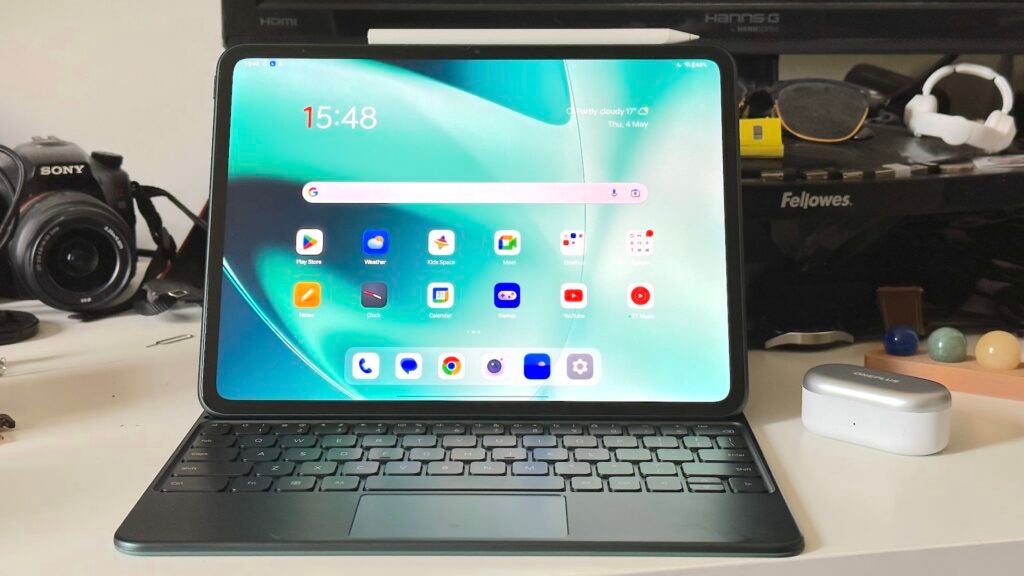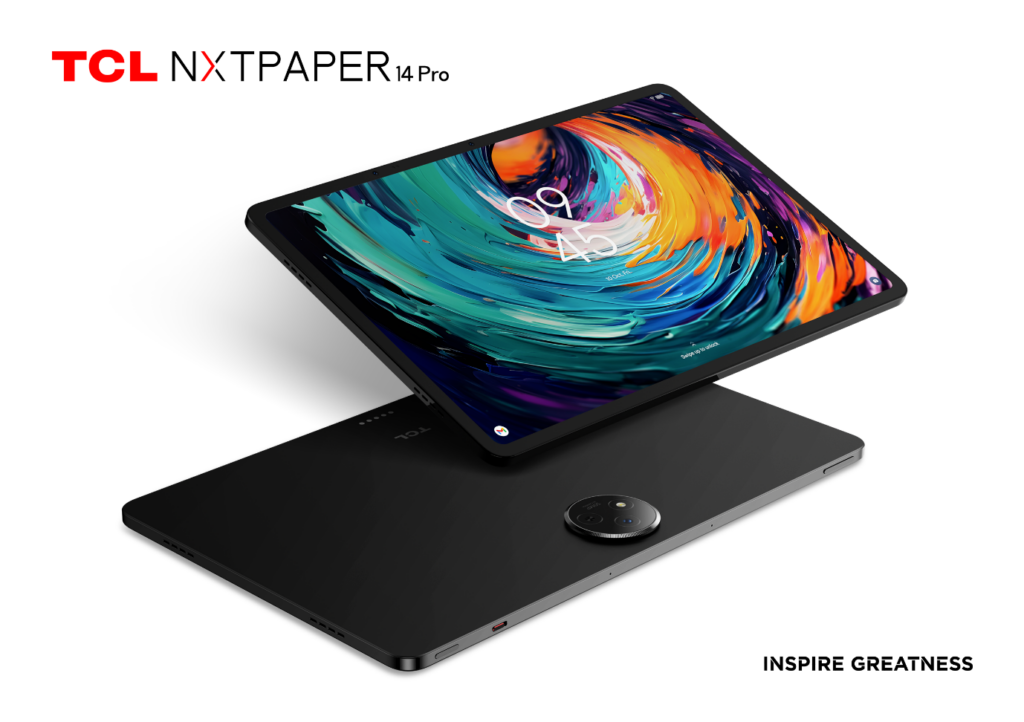TCL has had a mammoth CES 2024 with the reveal of a collection of US-focused Nxtpaper smartphones, the announcement of the RayNeo X2 worldwide availability and the launch of new tablets, including the TCL Nxtpaper 14 Pro.
The question is, how does the 14-inch TCL Nxtpaper 14 Pro compare to the impressively capable OnePlus Pad?
While the OnePlus Pad offers a well-rounded experience that we were largely impressed with in our review, the Nxtpaper 14 Pro offers something completely different. For one, it boasts TCL’s Nxtpaper 3.0 tech that not only allows the display to shift to an E Ink mode with the press of a button but should be much easier on your eyes than a regular tablet display.
There’s much more to it than that though. While we’re yet to go hands-on with the TCL Nxtpaper 14 Pro, here’s how the tablet compares to the OnePlus Pad.
The Nxtpaper 14 Pro has unique display tech
The OnePlus Pad has a rather unique display for a tablet, boasting an 11.61-inch IPS LCD with a super-fast 144Hz refresh rate that makes it faster than even top-end tablets like the 120Hz Samsung Galaxy Tab S9 Ultra and iPad Pro M2.
That means animations are buttery smooth, the screen feels responsive, and it can display more frames per second than most other tablets on the market. It also boasts support for rather premium standards like Dolby Vision and HDR10+, making it a great screen for gaming, watching movies, or even working.
On the other hand, TCL’s new Nxtpaper 14 Pro has gone down an entirely different route by sporting the company’s latest Nxtpaper 3.0 tech – a first for a TCL tablet. The screen uses tech like circular polarised light, DCM dimming and smart colour harmony to essentially provide what TCL calls the most comfortable viewing experience around.
It’s more than just easy on your eyes too; the tech also allows the Nxtpaper 14 Pro to boast an e-reader mode, with a dedicated Nxtpaper key switching between colour and E Ink mode and an entirely separate E Ink UI to interact with. That essentially gives you the choice between full colour or black-and-white e-reader style screens depending on what you’re doing.
That’s not all either; the 14-inch display sports premium specs like a 2.8K resolution and a smooth 120Hz refresh rate, making for what seems to be an impressive screen – on paper, anyway.
The OnePlus Pad is more powerful
The TCL Nxtpaper 14 Pro has come out swinging with some pretty impressive specs for an Android tablet, sporting a MediaTek Dimensity 8020 chipset with 12GB of RAM and 256GB of storage as standard. It should also charge up pretty quickly with 33W fast charging tech to play with.

However, it doesn’t do quite enough to compete with the OnePlus Pad, which is a bit of a powerhouse considering its £449/$479 price tag. That’s because the OnePlus Pad comes equipped with the more powerful MediaTek Dimensity 9000, although it is limited to 8GB of RAM and 128GB of storage in its base configuration.
That said, we found the OnePlus Pad to be responsive and powerful in everyday use, with benchmark tests showing that it’s only slightly behind Apple’s similarly priced iPad 10. It also has absurdly fast 67W charging that delivers a full charge in just over an hour.
It’ll certainly be interesting to see how the Nxtpaper 14 Pro compares once we get it in for testing.
The Nxtpaper 14 Pro has a more natural stylus experience
The TCL Nxtpaper 14 Pro and OnePlus Pad offer stylus support with a dedicated stylus for each, though the experience on offer differs quite a lot – and it’s down to the aforementioned display tech.

The OnePlus Pad’s stylus does the job quite well; it’s not dissimilar to the Apple Pencil in design and weight, also magnetically snapping onto the side of the tablet to charge like Apple’s option. It glides across the glossy screen with little friction, making for a smooth note-taking experience – though it’s not exactly close to the traditional pen-and-paper alternative.
That’s the gap that TCL wants to fill with the Nxtpaper 14 Pro’s Nxtpaper 3.0 display. As well as offering the ability to switch between full colour and E Ink display modes, the screen is coated in a matte finish that resembles the sensation of drawing on paper when a stylus is used.
While we have yet to go hands-on to confirm, that should allow for a much more natural sensation when using the stylus with slight resistance from the matte display.
The OnePlus Pad has wider accessory support
While the Nxtpaper 14 Pro might have the stylus experience nailed, it stops there; no other accessories are available for the tablet at launch. You can still use accessories like Bluetooth keyboards with the tablet, but you won’t find a compact built-in solution.
That makes the OnePlus Pad a more tempting option to those looking for a tablet for work, school or anything else text-based, sporting a keyboard case with a dedicated trackpad. Combined, it essentially turns the OnePlus Pad into a laptop, and the 7:5 display also lends itself particularly well to split-screen multitasking.
It’s not the perfect experience – we felt that OnePlus could do more with the software support backing up the stylus and keyboard accessories – but at least the hardware is available for those who need it.
The catch? Both the stylus and keyboard case are sold separately. That’ll hike up the tempting £449/$479 price tag for those who want to take advantage.
The Nxtpaper 14 Pro won’t be available worldwide
The TCL Nxtpaper 14 Pro certainly stands out in the Android tablet market, making it all the more disappointing that it won’t get a worldwide launch.
TCL has confirmed that it’ll be coming to the US and other yet-unnamed countries, but it has said it’s not due for a launch in EMEA. That’s Europe, the Middle East and Africa if you’re unfamiliar. It has also yet to confirm just how much the tablet will cost.
The OnePlus Pad, on the other hand, is readily available to buy in the UK, US, most of Europe and other countries around the world, starting at £449/$479.










